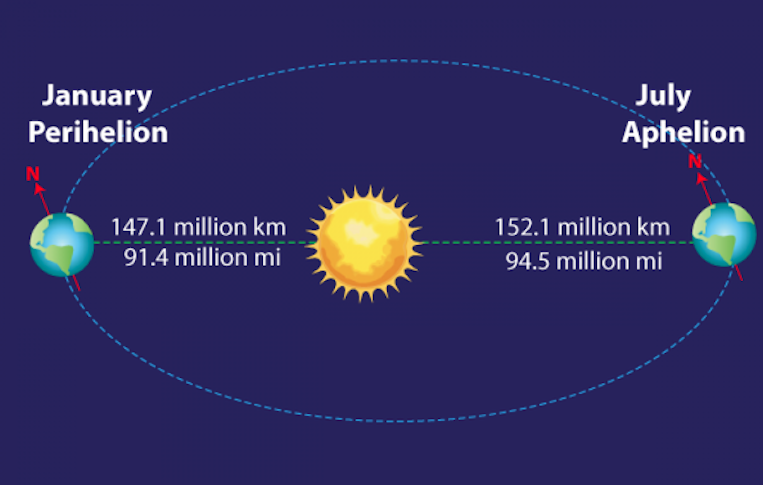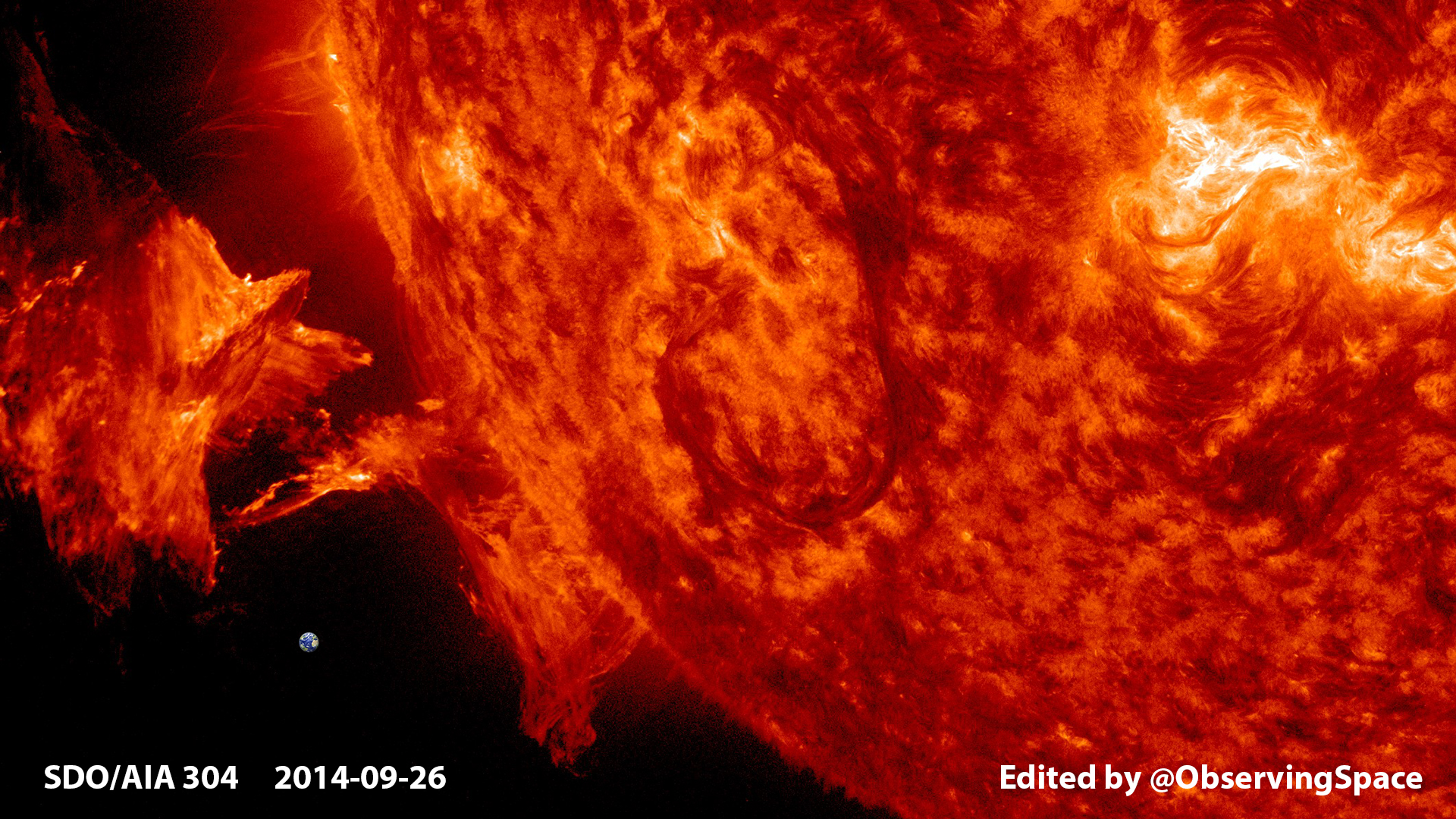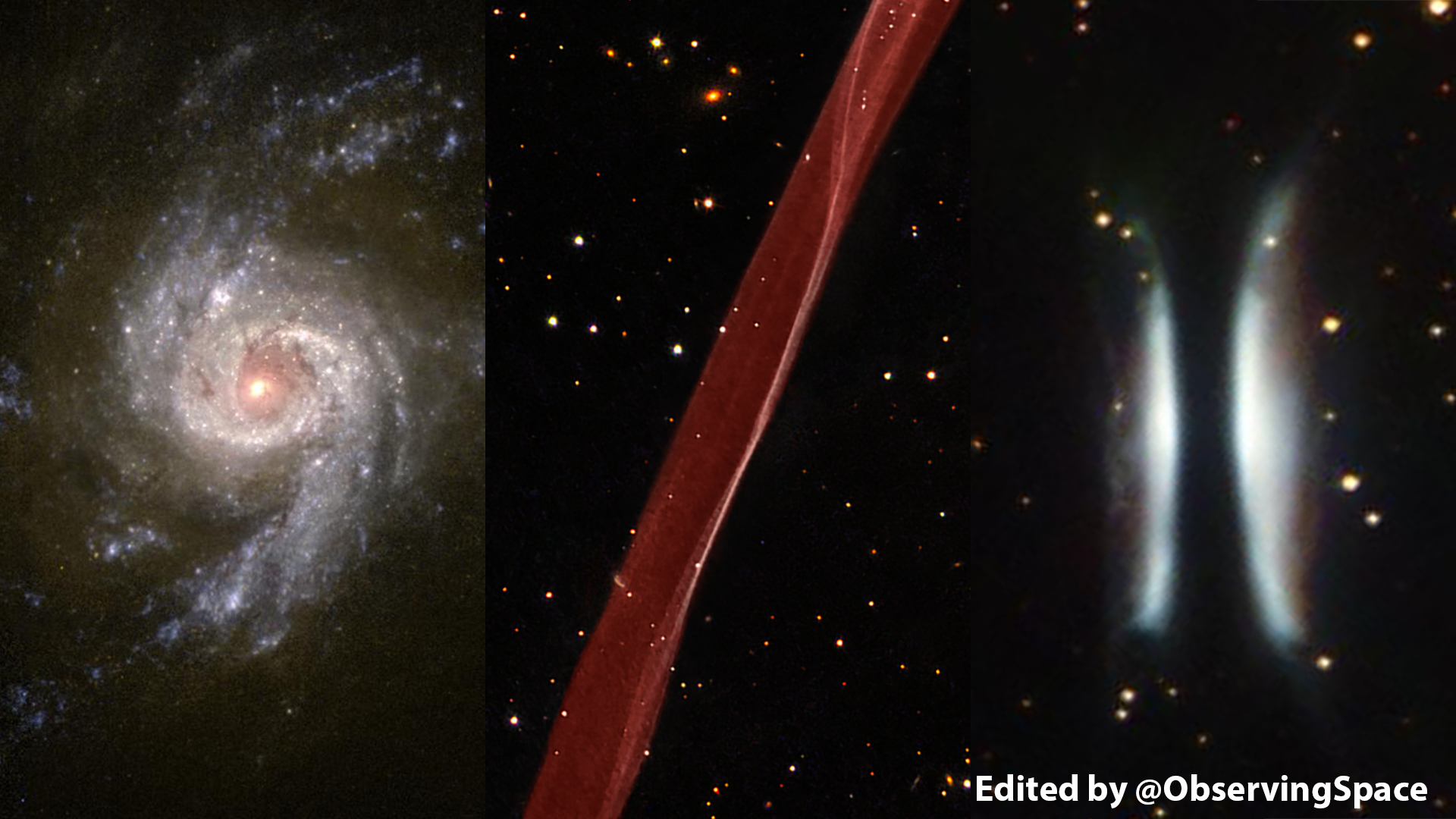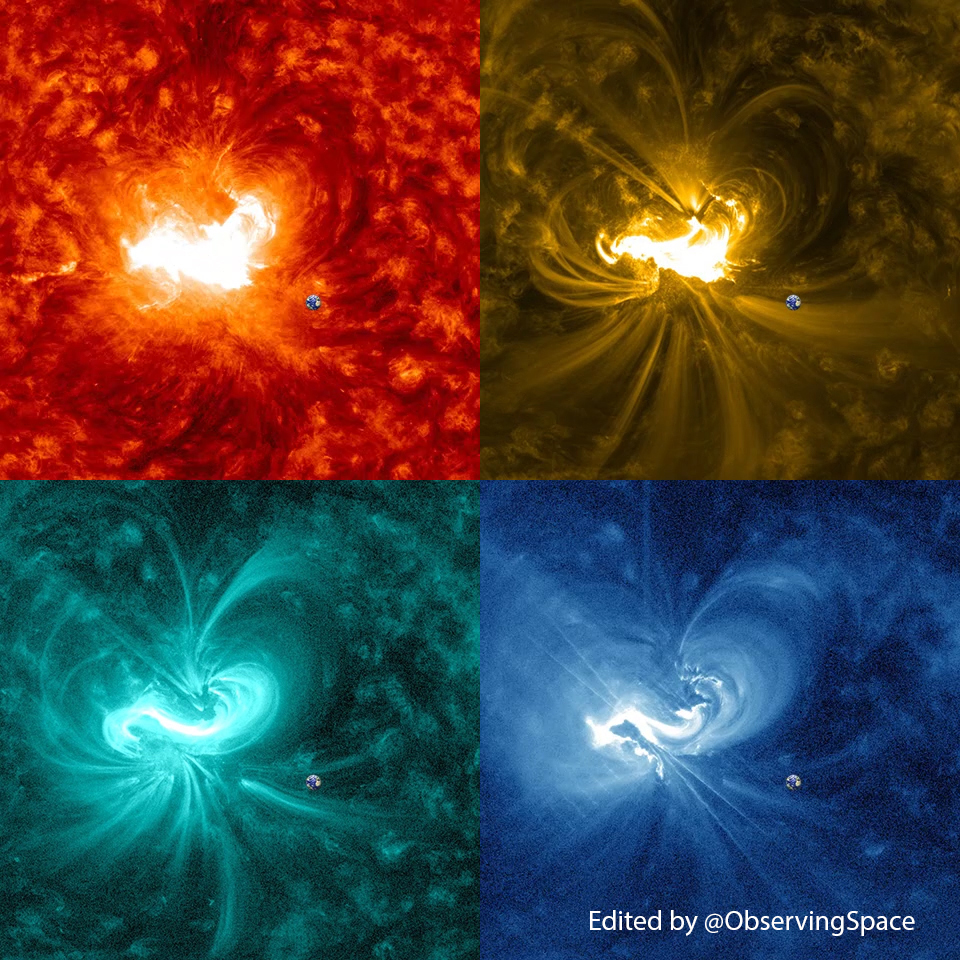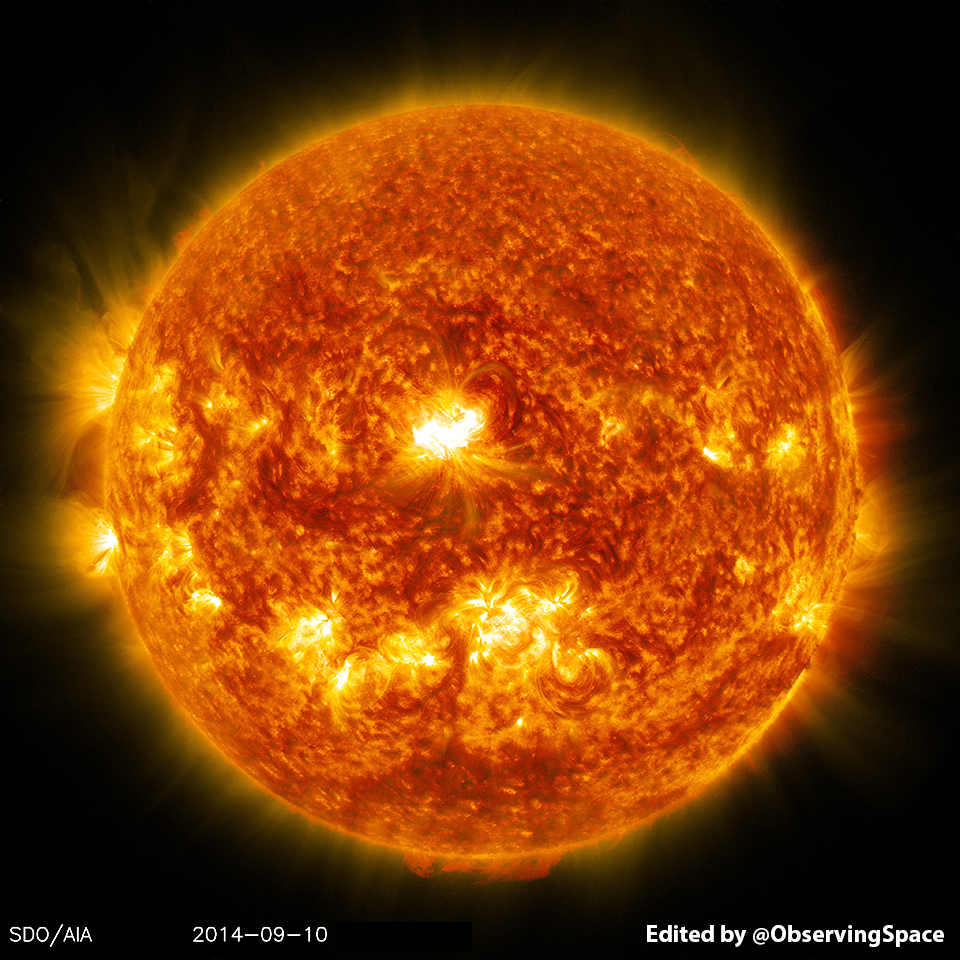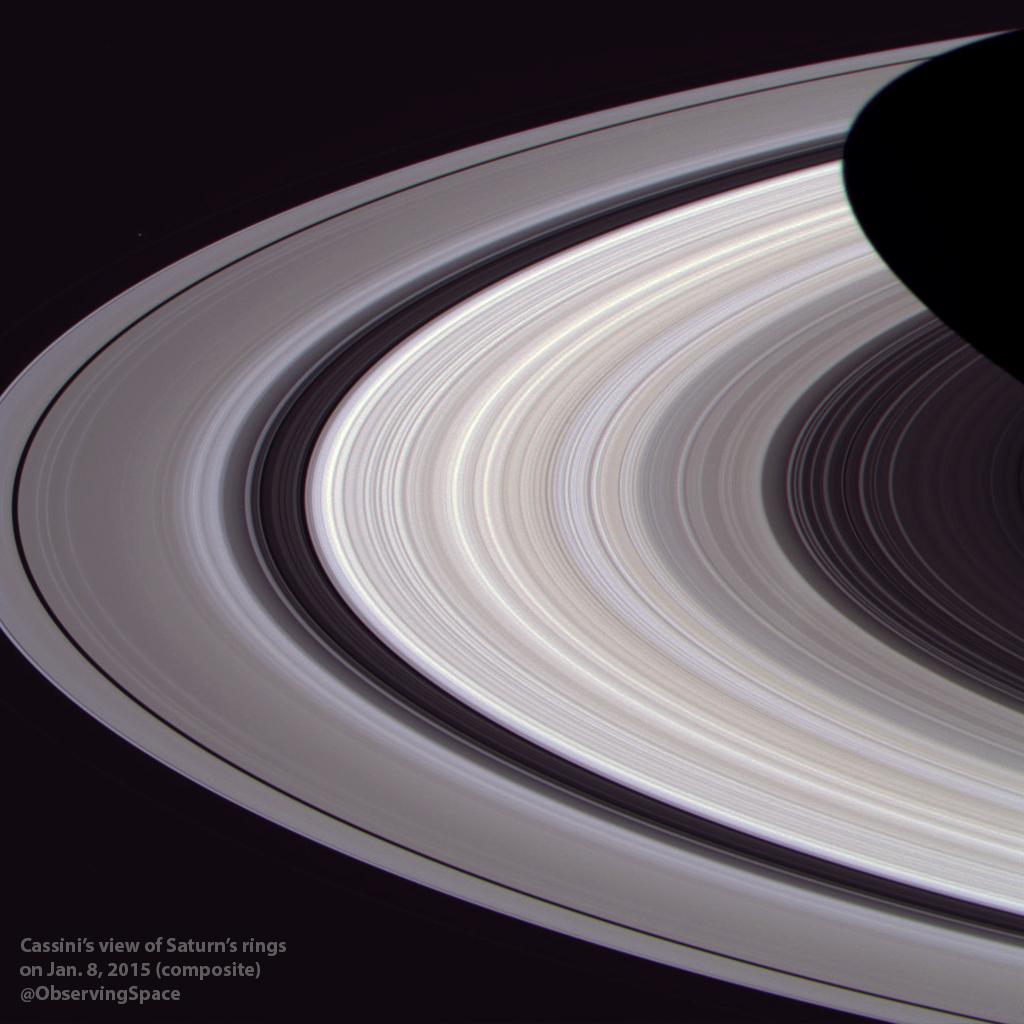
This is a composite image created from three images that Cassini captured on Jan. 8, 2015. Cassini was approximately 581,474 miles (935,791 kilometers) from Saturn at the time the images were taken.
A star or one of Saturn’s moons looms near the F ring on the lefthand side.
The images were processed differently than usual and the final outcome based on similar imagery color from In Saturn’s Rings (screenshot).
Credit: NASA/JPL/SSI/@ObservingSpace

